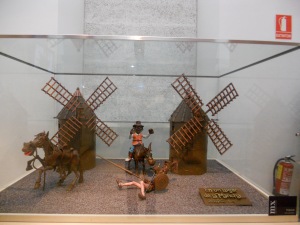For all those who have requested many times my recipe for the “Argentinian empanadas” (Argentinian style meat turnovers), here you have it. Now you can try to make them at home and share with family and friends at all times. They are the perfect food to make, bake, freeze and store in individuals packets and have them ready to go. Take them to the office for lunch (you will make new friends I promise you), get them ready for your kids so they can have a healthy snack when they come back from school or hide them for yourself in the fridge (good luck with that!). You can enjoy them either hot or cold. They are so easy to make that you are not going to believe it!. Once you have conquered this recipe nobody can stop you from making your own creations by replacing the meat filling with anything you like (try ham & cheese; tomato, mozzarella and ham; spinach & ricotta; cooked tuna, and much more)
You can either try to make the crust or use frozen pastry dough sold at your grocery store. If you go for the second option, allow the dough to defrost in the fridge overnight before using it.
For those who like to challenge themselves in the kitchen and have more time to spare, here goes my recipe for the empanada crust. Notice that this recipe is best for baked empanadas instead of the fried ones. If you ask me wich one I prefer or like most, the crust for baked empanadas is the answer as it is a healthier choice and stores better.
Crust for baked empanadas:
Ingredients
- 1 2/3 cup all-purpose flour
- 1 cup of Salmuera (brine). Prepare a concoction with dissolved salt in hot water and left aside until cold.
- 4 ounces of butter or margarine
Preparation
To make the crust, place the flour into a bowl and mix the margarine or butter into the flour using your fingers. Pour the Salmuera slowly into the mix and mix it with your fingers just until the dough comes together and can be formed easily into a ball. Let the dough rest (outside the fridge) for about half an hour. Divide the dough in small balls the size of half an egg. Then roll with a roller pin out to a thickness of 1/8-inch making a rounded shape.
Filling:
- 1 pound ground beef
- 2 tablespoons Corm oil
- 1 tablespoons of butter
- 1 large yellow onion chopped in small squares
- 2 hard-boiled eggs, finely chopped
- 1/2 cup green olives, finely chopped
- 2 tablespoons raisins
- ¼ cup chopped spring green onion (only the green part)
- 1 tablespoon ground hot and sweet paprika
- 1 tablespoon ground red dry spicy peppers
- 1 tablespoon cumin
- Salt and freshly ground black pepper to taste
Preparation
In a large saucepan, melt the butter with corn oil together, and place the onions and stir them until transparent. Add the ground beef, next add the raisin, spices, salt and fresh ground black pepper to taste and stir with a wooden spoon to keep the meat broken-up. Pour over about a half cup of water and let it cook for about 10 minutes or until meat is completely cooked. Once cooked, place the filling in a bowl, let it cool off, cover it and put in the refrigerator (for better taste) overnight, otherwise if time does not permit, leave the filling for about an hour in the refrigerator. Once you have the mix cold then is when you add the hard-boiled eggs, green olives and spring green onions.
Egg wash:
- 1 egg, beaten
- 1 tablespoon milk or water
Filling the empanadas:
Take the dough you let to rest and divide the dough in small balls the size of half an egg. Then roll it out with a roller pin to a thickness of 1/8-inch making a rounded shape from each ball. Spoon the filling onto one half of each leaving room to fold in the other half and seal. Tab some warm water with your fingers, place in half of the ends so the dough will stick better, press the edges with the tip of a fork or you can do what we call in Argentina “repulgue” which instead of using the fork to seal you flip it upwards and press with your fingers. Place on a non-stick baking pan or add a thin layer of butter to the pan. Combine the ingredients for the egg wash and brush each empanada at the top. Pre heat the oven to 350 F and bake them until the crust turns light brown. Buen provecho y a disfrutar!
Do not be intimidated by doing the “repulgue”. Keep trying and remember that with good practice you will become a pro! You also have the option of closing and pressing the dough with the help of a fork
Time for me to make a visit to the kitchen and look for these delicious snacks in my freezer… so much working deserves a good prize! Yummy!




























